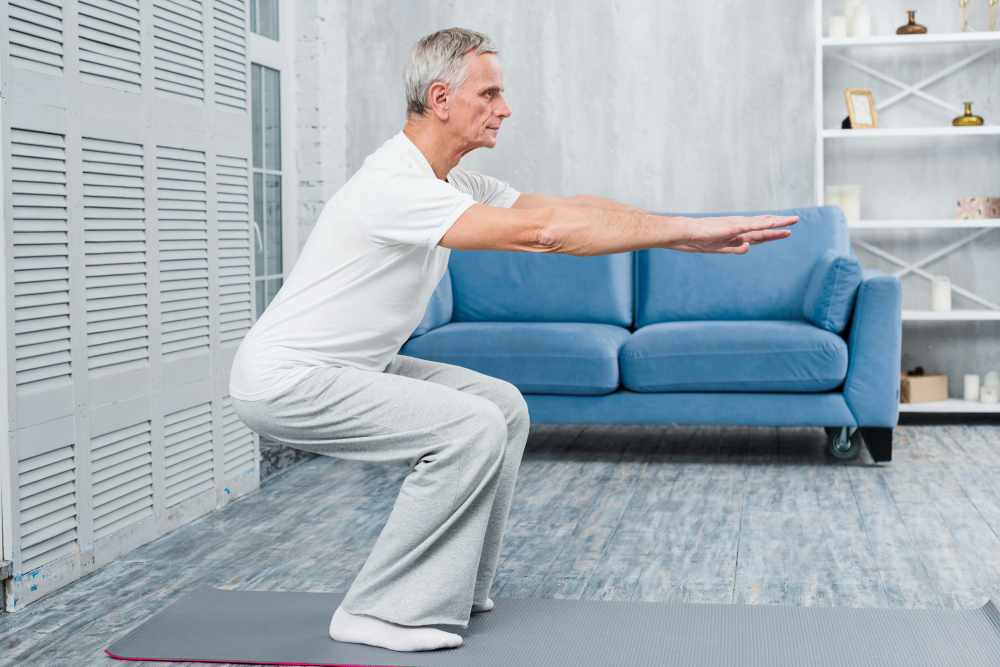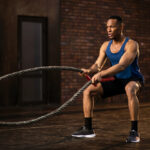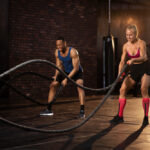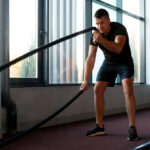Most senior fitness advice sounds like a prescription for staying barely mobile. A little walking here, some light stretching there, and you’re supposed to call it a day? That’s not enough. If your goal is to stay sharp, strong, and capable, then you need more than the basics.
That is where functional fitness exercises for seniors come into play. They are all about making everyday activities easier. For example, getting off the floor without a struggle. Lifting groceries without pulling your back. Reaching, twisting, stepping… Moving like you did 10 or 20 years ago. So let’s see how to do these exercises.
What is Functional Fitness?
Functional fitness is about training for real life, not just looking fit in a mirror. It’s the kind of strength, balance, and coordination that helps you carry groceries, climb stairs, pick something up off the floor, or get out of a chair without using your hands.
This isn’t about chasing six-pack abs or doing fancy gym moves. It’s about building the kind of fitness that makes everyday tasks easier and your body more capable overall.
Is Functional Fitness Good for Seniors?
Absolutely! It’s one of the smartest ways for seniors to train.
But here’s the catch… It has to be adapted. You’re not trying to lift 200 pounds or do box jumps. You don’t need to.
Functional fitness exercises for seniors aren’t about going heavy or hard. Instead, it’s about moving better, staying strong where it counts, and avoiding injury.
The beauty of this approach is that it meets you where you are. Functional fitness exercises for seniors should be scalable and simple, but at the same time highly effective.
The Most Beneficial Exercises for Seniors
Functional fitness exercises for seniors are all about movements that mimic real activities.
Things you do every single day. Getting out of a chair? That’s a squat. Picking something up from the floor? That’s a hinge. Pushing a door open? That’s a push movement. Climbing stairs? That’s a lunge in disguise.
Functional fitness boils down to a few core patterns:
- Squats
- Push movements
- Pull movements
- Hinges
- Lunges or step-ups
- Carries and balance drills
Now, not everyone can drop into a perfect squat or crank out push-ups… And that’s okay.
If you are not capable of doing the traditional variation of the exercise, you should modify it to your level. There is nothing wrong with that. If you stay dedicated and train hard every workout, you’ll eventually be able to perform exercises without any assistance.
And if that doesn’t happen, it still doesn’t matter. You’ll still get benefits from the modified variations and find everyday activities much easier.
The Best Functional Fitness Exercises for Seniors
Here are our favourite functional fitness exercises for seniors:
Bodyweight Squat
This exercise builds leg strength and makes standing up easier.
How to do it: Stand with feet shoulder-width apart, bend knees, lower hips, then return to standing.
Modified: Sit-to-Stand from a Chair. Use a sturdy chair, sit down slowly, then stand back up without using your hands.
Pro tips:
- Keep your weight in your heels.
- Don’t let knees cave in.
- If needed, use a cushion to raise the chair height.
Push-Ups
Push-ups will strengthen the arms and chest. So activities like opening doors or pushing a shopping cart become easy.
Standard: Push-ups on the floor (on knees or toes).
Modified: Wall Push-Ups. Stand facing a wall, hands shoulder-width apart. Lower your body toward the wall, then push back.
Pro tips:
- Keep your body in a straight line. Don’t sag at the hips.
- Inhale on the way down, exhale on the push back.
Seated Rows with Resistance Band
This move improves posture and pulling strength (carrying groceries, opening doors).
Standard: Use resistance bands or cable machines in a seated or bent-over position.
Modified: Seated Band Rows. Sit in a chair, loop a band around your feet, and pull the handles toward your waist.
Pro tips:
- Keep shoulders relaxed, not shrugged.
- Focus on using your back, not your arms.
- Don’t let the band snap back. Control the movement.
Step-Ups
Here you are mimicking stair climbing, which improves balance and leg strength.
Standard: Step onto a low bench or sturdy step, then step down. Alternate legs.
Modified: Mini Step-Ups. Use a very low step (even a curb or stair) and hold onto a wall or railing for support.
Pro tips:
- Keep your whole foot on the step.
- Lean slightly forward, not back.
- Go slow to avoid tripping.
Hip Hinge (Romanian Deadlift with Light Weights or Band)
Hinge movements strengthen the back and hips for safe bending and lifting.
Standard: With light dumbbells, push hips back, lower weights along legs, then return to standing.
Modified: Hands-on-Thigh Hinge. Stand tall, place hands on thighs, slowly slide hands down thighs while pushing hips back, then return.
Pro tips:
- Don’t round your back. Imagine holding a plank while standing.
- The movement is in the hips, not the knees.
Standing March or High Knees
This is a great way to boost coordination and balance, and it can also help with walking stability.
Standard: March in place with exaggerated knee lift.
Modified: Seated Marching. Sit tall and lift one knee at a time, alternating legs.
Pro tips:
- Keep your core tight.
- Go slow and deliberate to improve balance.
- Use a wall or chair for support if standing.
Farmer’s Carry
This exercise is great for building grip strength, improving posture, and total-body stability.
Standard: Hold a weight in each hand and walk slowly, keeping shoulders back.
Modified: Short-Distance Carry. Use lighter weights (or even water bottles) and walk a short distance with good posture.
Pro tip:
- Keep your head up, don’t look down.
- Tighten your abs as you walk.
- Rest if your grip starts to fail, then go again.
Workout Sample
You don’t need to work out every day to see real benefits. In fact, doing these functional exercises just 3 times a week is a solid starting point. It gives your body time to recover, build strength, and adapt.
Each session should include at least 1-2 sets of every exercise, aiming for 8–12 reps per set (or 15-30 seconds for movements like marching or carrying). Keep the pace steady, focus on form, and rest when you need to.
For workout structure, you can rotate the order of exercises each session to keep things fresh and avoid overworking the same movement patterns back-to-back.
Keep in mind that you can customize the number of workouts to your level. If you’re feeling strong and energized, go ahead and add a fourth workout to your week. If you’re feeling tired, sore, or just need more recovery, two sessions are perfectly fine.
Don’t Skip the Warm-Up
Before you jump into the workout, take 5-10 minutes to warm up. This gets your blood flowing, increases joint mobility, and helps prevent injury. A good warm-up doesn’t need to be complicated.
Start with gentle movements like arm circles, leg swings, shoulder rolls, or a light walk around the room. You can also add in a few slow squats or marches in place to get your muscles firing.
Final Thoughts
Functional fitness isn’t just another trend. It’s a smarter, more practical way for seniors to train. It helps you move through everyday life with strength, ease, and confidence. Whether you’re getting off the floor, climbing stairs, or just carrying a bag of groceries, these exercises target the movements that matter most.
And the best part? You don’t need to be perfect. Modified versions work just as well, especially if you’re consistent and focused. Three workouts a week are plenty to start, and you can scale up or down based on how you feel. The goal isn’t to do the most. It’s to move better, stay independent, and feel more capable every day.





